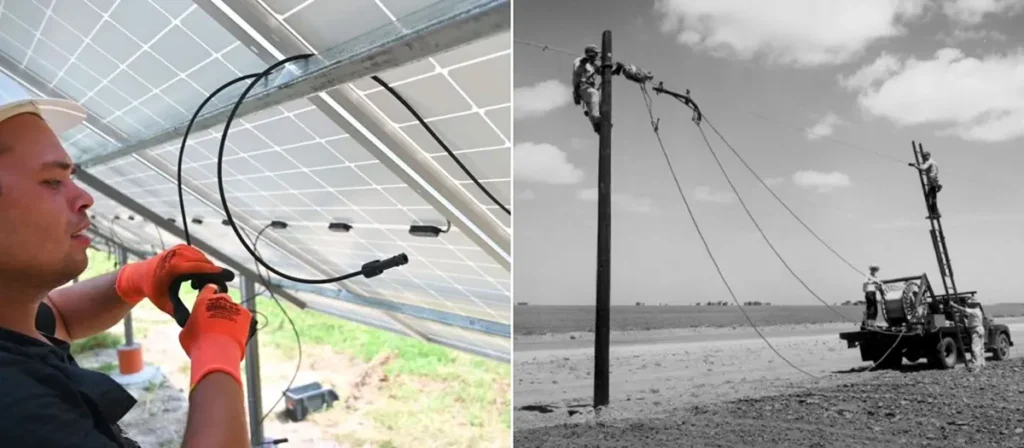Today with the signing of the Inflation Reduction Act, America is making its most significant investment ever in rural electrification, with $9.7 billion available to Rural Electric Cooperatives for new clean energy investments.
The USDA Assistance for Rural Electric Cooperatives Program will help rural Americans save money, invest in clean energy, and create 90,000 jobs. CURE, a rural Minnesota-based democracy organization, led the Rural Power Coalition— seven place-based organizations located in the most carbon-intensive electric co-ops in the country—to help secure this monumental funding for clean energy and rural economies. Just as the Rural Electrification Act helped rural communities fully participate in the 20th-century economy, the Inflation Reduction Act will connect rural residents with 21st-century clean energy economic opportunities.
Currently, Rural electric co-ops severely lag in the adoption of renewable energy. Two-thirds of all power distributed by electric co-ops comes from fossil fuels. As a result, co-op member-owners pay much more than their city-dwelling neighbors for this dirty electricity. Rural electric cooperatives serve 92% of federally recognized persistent poverty counties and rural Americans are among the communities most impacted by climate change. They, therefore, have much to gain with critical investments in rural electrification.
“Over 100 years ago, rural democracy organizations from Western Minnesota brought forth the American Cooperative Movement. They later played a big role in winning and implementing the Rural Electrification Act,” said Erik Hatlestad, Energy Democracy Program Director at CURE, “Now, with the Inflation Reduction Act, a rural democracy organization from rural Minnesota once again has led the charge in advancing rural electrification and the cooperative movement.” Hatlestad was the chief author of the Rural Electrification 2.0 report outlining the policy in 2018 and helped lead the Rural Power Coalition’s effort.
There are two more provisions in the Inflation Reduction Act that bolster rural renewable energy that CURE and the Rural Power Coalition played a significant role in securing. Electric co-ops can finally receive direct pay credits for wind, solar, and other renewable energy projects. Previously, co-ops were not eligible because they are not-for-profit entities that do not pay federal income taxes; for-profit utilities have received these clean energy incentives for years. This critical policy levels the playing field between electric cooperatives and for-profit utilities. The existing & well-used Rural Energy for America Program (REAP) also receives an additional $1.965 billion. This will facilitate even more farm and small business scale renewable energy installations across rural communities.
While CURE is celebrating this hard-fought victory, they acknowledge the real challenge is just beginning. Electric co-op member-owners in Minnesota and across the country must fight for a strong implementation of Inflation Reduction Act policies that prioritize clean energy, democracy, and local jobs.
“Co-op member-owners must be put back in the driver’s seat to ensure that rural electric co-ops use these funds in the most effective ways that develop more renewable energy that generates wealth throughout communities instead of continuing to enrich the entrenched fossil fuel industries,” said Hatlestad, “Rural Electric Co-ops were founded on democratic principles that empowered their member-owners to enact a radically progressive vision for rural America that powered rural communities across the county. If co-ops pair democratic power with the Inflation Reduction Act’s historic investments, they can take rural America forward again.”


